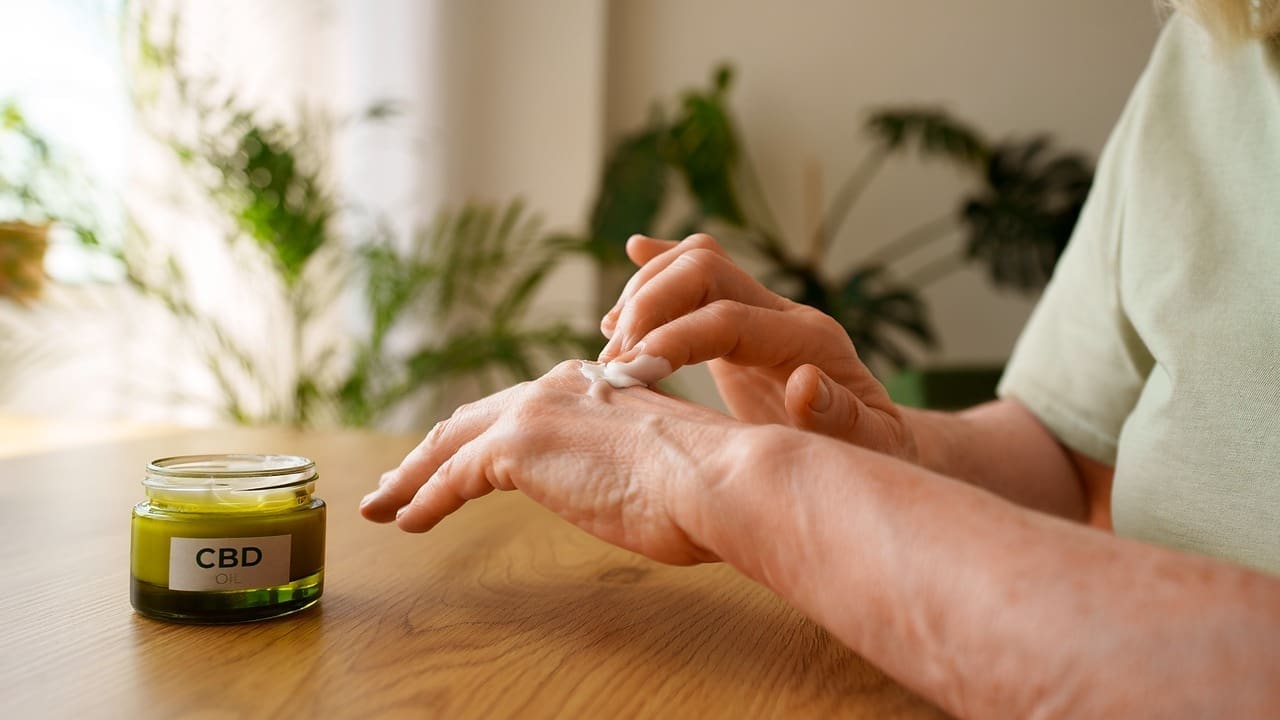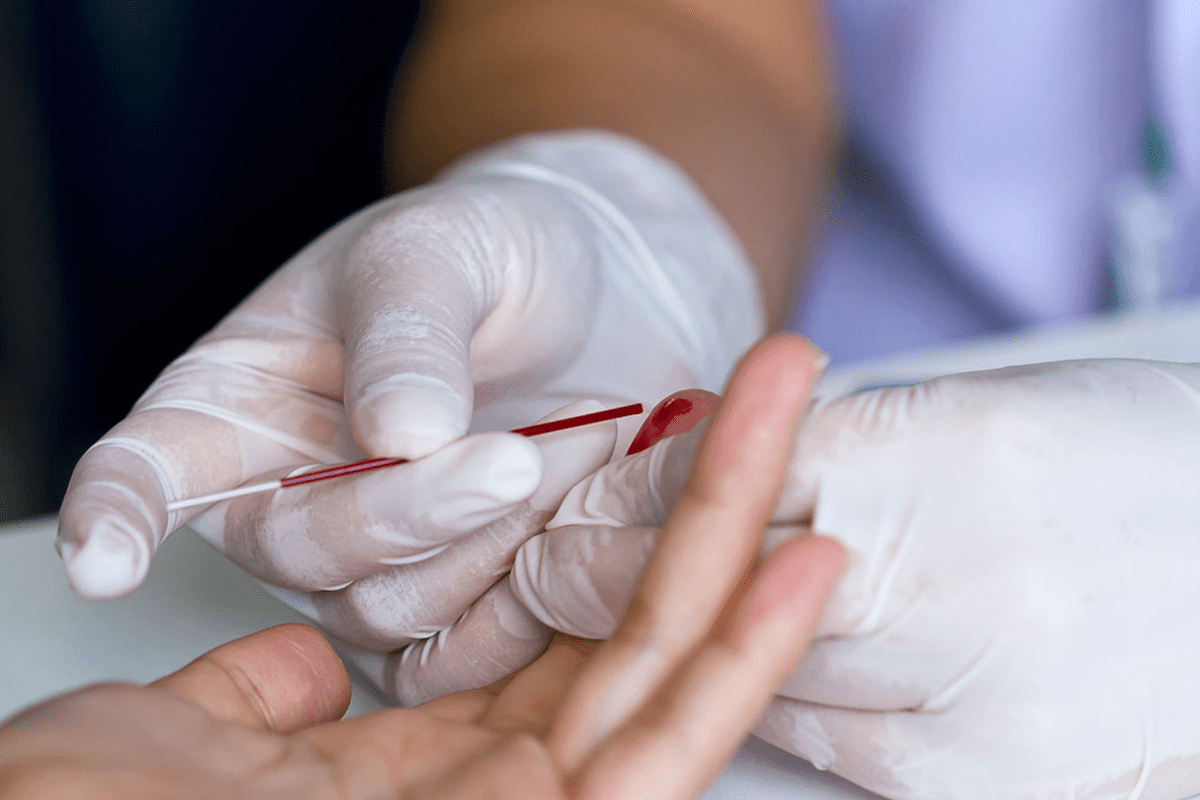Last Updated on November 27, 2025 by Bilal Hasdemir

Going through cancer therapy is tough, with various side effects affecting life quality. At Liv Hospital, we know how key it is to manage these side effects. We aim to give patients the best care possible.
Up to 80% of patients face at least one serious symptom during cancer treatment. Our mission is to offer tailored support. This helps lessen these issues, boosting overall health.
We provide comprehensive care and cutting-edge solutions. Our goal is to empower patients to face the hurdles of cancer treatment.
Key Takeaways
- Understanding common side effects of cancer therapy
- Personalized support for managing cancer treatment side effects
- Internationally recognized clinical outcomes at Liv Hospital
- Strategies for mitigating the impact of side effects on quality of life
- Comprehensive care for patients undergoing cancer treatment
Understanding Why Cancer Treatment Side Effects Occur
It’s important to know why cancer treatment side effects happen. Treatments like chemotherapy, radiation, and surgery aim to kill cancer cells. But, they can also harm healthy cells, causing side effects.
The Mechanism Behind Side Effects
Side effects come from how treatments affect both cancer and healthy cells. Chemotherapy, for instance, goes after cells that grow fast, like cancer cells and some healthy cells. This can cause hair loss and nausea.
Factors Affecting Side Effect Severity
Many things can make side effects worse. The type of treatment, how much is used, and the patient’s health matter a lot. Studies show that people with health issues or getting high doses of treatment face more severe side effects. Knowing this helps doctors plan treatments that reduce harm.
The Prevalence of Cancer Treatment Side Effects
Cancer treatment side effects are common among patients. The type of treatment affects how many people experience them. Knowing how widespread these side effects are helps us better care for our patients.
Statistics and Research Findings
Many studies have shown that a lot of patients face side effects from their cancer treatment. For example, almost 90% of those getting chemotherapy report side effects.
| Treatment Type | Common Side Effects | Prevalence |
|---|---|---|
| Chemotherapy | Nausea, Fatigue, Hair Loss | 80-90% |
| Radiation Therapy | Fatigue, Skin Changes | 70-80% |
| Targeted Therapy | Skin Rash, Diarrhea | 50-70% |
Variations by Treatment Type
The types of side effects and how often they happen can change based on the treatment. For instance, chemotherapy often leads to more side effects than targeted therapy. Knowing this helps us give more personalized support to our patients.
Fatigue: The Most Common Side Effect
Fatigue is a big problem for people going through cancer treatment. It makes you feel very tired and weak. It also makes it hard to do everyday things.
Causes of Fatigue in Cancer Treatment
Cancer treatments like chemo, radiation, and surgery can make you tired. They affect how your body works. This can lead to anemia, which makes you even more tired.
Effective Management Strategies
There are many ways to fight fatigue. Here are some tips:
Exercise and Activity Modifications
Doing gentle exercises like yoga or short walks can help. It’s also important to pace yourself. This means finding a balance between rest and activity.
Nutrition and Hydration
Eating well and staying hydrated are key. Eating foods high in protein and iron can help. This can give you more energy.
| Management Strategy | Description | Benefits |
|---|---|---|
| Exercise | Gentle exercises like yoga or short walks | Reduces fatigue, improves mood |
| Nutrition | Balanced diet rich in protein and iron | Enhances energy levels, supports overall health |
| Hydration | Adequate fluid intake | Helps maintain energy, reduces fatigue |
By using these tips, patients can fight fatigue better. This can make their life during treatment much better.
Nausea and Vomiting: Digestive System Challenges
Nausea and vomiting are common side effects of many cancer treatments. These symptoms can really affect a patient’s life quality. It’s important to know why they happen and how to manage them.
Cancer Treatments That Cause Nausea and Vomiting
Some cancer treatments are more likely to cause nausea and vomiting. Chemotherapy, like cisplatin, is known for these symptoms. Radiation therapy, when aimed at the belly, can also cause these issues.
Knowing which treatments might cause these side effects helps patients prepare. It helps them know what to expect.
Managing Nausea and Vomiting
Managing nausea and vomiting requires a few steps. Antiemetic medications, diet changes, and other approaches can help. We’ll look into these in more detail to help patients during treatment.
Dietary Adjustments for Relief
Changing your diet can help manage nausea and vomiting. Eating small meals often and avoiding strong-smelling foods is helpful. Drinking lots of water is also key.
Try to avoid fatty or spicy foods. They can make nausea worse.
Complementary Approaches to Antiemetic Medications
Along with medications, other therapies can help. Acupuncture, relaxation techniques, and some supplements can offer relief. These methods can lessen nausea and vomiting, making treatment more comfortable.
Hair Loss and Body Image Changes
Hair loss during cancer treatment has a big emotional impact. It affects patients’ confidence and sense of self. Many patients feel distressed because of it.
Which Treatments Cause Hair Loss and Why
Chemotherapy is the main reason for hair loss in cancer patients. Some targeted therapies and radiation can also cause hair loss. This happens because the treatments damage hair follicle cells.
Coping Strategies and New Approaches
There are ways to lessen the impact of hair loss. These include taking preventive steps and getting emotional support.
Scalp Cooling and Other Preventive Methods
Scalp cooling is a method to prevent hair loss during chemo. It cools the scalp to slow down blood flow. This reduces the amount of chemo that reaches hair follicles.
Wigs, Scarves, and Emotional Support
Wearing wigs, scarves, or hats can help patients feel better about their hair loss. Emotional support from loved ones or support groups is also key. It helps patients handle the emotional side of hair loss.
Understanding why hair loss happens and using coping strategies can help patients deal with it. This way, they can manage this tough side effect of cancer treatment.
Managing Pain During Cancer Treatment
Managing pain during cancer treatment is key to keeping patients well. Many cancer patients face pain from their disease or treatment. We’ll look at the types of pain and how to manage them.
Types of Cancer-Related Pain
Cancer pain can be divided into types based on its cause and how it feels. Knowing these types helps in managing pain better. The main types are nociceptive, neuropathic, and breakthrough pain.
| Type of Pain | Description | Common Causes |
|---|---|---|
| Nociceptive Pain | Pain caused by tissue damage | Tumor growth, surgery |
| Neuropathic Pain | Pain resulting from nerve damage | Chemotherapy, nerve compression |
| Breakthrough Pain | Transient pain that occurs despite ongoing pain management | Movement, medication wear-off |
Pharmacological Approaches
Medications are a mainstay in managing cancer pain. We use opioids, non-opioids, and other drugs to control pain. For more on pain management, visit https://www.cancer.gov/about-cancer/treatment/side-effects/pain.
Non-Pharmacological Pain Management
Non-medication strategies are also important. These include physical therapy, psychological therapies, and alternative treatments like acupuncture and massage.
By using both medication and non-medication methods, we can better manage cancer pain. This improves patients’ quality of life.
Skin Changes and Rashes from Cancer Therapies
Cancer treatments can really affect the skin, causing dryness, redness, and rashes. These reactions can be quite uncomfortable. They can also impact a patient’s quality of life. We will look at common skin reactions from different treatments and how to prevent and manage them.
Common Skin Reactions by Treatment Type
Each cancer therapy can cause different skin reactions. For instance, targeted therapies and immunotherapies might lead to rashes. Chemotherapy can make the skin dry and sensitive. Knowing the skin effects of a treatment can help patients prepare and manage these side effects better.
Skin Care During Cancer Treatment
Proper skin care is key during cancer treatment to prevent skin changes. We suggest gentle cleansing and moisturizing to keep the skin healthy.
Preventive Measures
To avoid severe skin reactions, we tell patients to use mild soaps and wear protective clothing. Staying hydrated is also important. Using gentle skin care products and protecting against the sun are musts.
Treatment Options
For managing skin reactions, treatments include topical creams, oral medications, and lifestyle changes. We help patients create a personalized skin care plan.
Neuropathy: Nerve Damage and Sensory Changes
Many cancer patients face neuropathy as a tough side effect. It causes nerve damage that changes how they feel and sense things. This can make simple tasks hard to do.
Risk Factors for Developing Neuropathy
Some cancer treatments, like chemotherapy, raise the risk of neuropathy. The treatment type and dose, plus the patient’s health, play a role. Knowing these risk factors helps manage neuropathy better.
Early Detection and Monitoring
Finding neuropathy early is key to lessening its effects. Doctors check for symptoms often. Patients should tell their doctors about numbness, tingling, or pain.
Treatment Options and Protective Measures
There are ways to tackle neuropathy, even though it’s tough. Doctors might prescribe medicines or suggest lifestyle changes. Patients can work with their doctors to find a plan that works for them.
Acting fast to treat neuropathy can greatly improve a patient’s life. By knowing the risks and using the right strategies, patients can lessen neuropathy’s impact. This helps them feel better during cancer treatment.
Cognitive Changes and “Chemo Brain”
Cancer treatment often leads to cognitive changes that affect a patient’s life. These changes, known as “chemo brain,” make it hard to remember, focus, and process information.
Understanding Cognitive Impairment During Treatment
Cancer treatment can harm cognitive function in many ways. It can be due to the treatment itself, the cancer, or the patient’s health. Studies show that chemotherapy can hurt brain function. This might be because it stops brain cells from regrowing and causes inflammation.
Strategies to Cope with Memory and Concentration Issues
There are ways to deal with cognitive changes. Cognitive exercises and lifestyle changes can help. These support brain health and improve memory and focus.
Cognitive Exercises
Doing puzzles, memory games, and learning new things can keep your mind sharp. Cognitive training programs are also available. They can be customized for each person’s needs.
Lifestyle Adaptations
Changing your lifestyle can also help your brain. This includes regular physical exercise
By using these strategies, patients can manage cognitive changes better. This improves their quality of life during cancer treatment.
Immunosuppression and Infection Risk
Cancer treatments can weaken the immune system, making infections more likely. These treatments aim to kill cancer cells but can also harm the body’s defense against infections.
Effects on the Immune System
Cancer treatments like chemotherapy and radiation can lower white blood cell counts. White blood cells are key in fighting off infections. This drop in white blood cells, known as neutropenia, raises the risk of getting sick.
Preventing and Managing Infections
Keeping infections at bay is vital in cancer care. We suggest several ways to lower the risk of infections, including:
- Practicing good hygiene, such as frequent handwashing
- Avoiding close contact with people who are sick
- Staying away from crowded areas
Hygiene and Environmental Precautions
Keeping a clean environment is key. This means regularly cleaning surfaces and avoiding places where infections might spread.
Monitoring and Early Intervention
Checking white blood cell counts often and acting fast if an infection starts can greatly lower the risk of serious problems.
| Precaution | Benefit |
|---|---|
| Frequent Handwashing | Reduces risk of infection transmission |
| Avoiding Crowds | Minimizes exposure to possible infections |
| Monitoring White Blood Cell Count | Allows for early detection of neutropenia |
Emotional and Psychological Side Effects of Cancer Treatment
Cancer treatment affects more than just the body. It deeply impacts a patient’s emotional and psychological health. It’s vital to tackle these emotional and psychological side effects during cancer care.
Anxiety, Depression, and Mood Changes
Anxiety and depression are common in cancer patients. These feelings come from the fear and uncertainty of the diagnosis and treatment. Mood swings can also happen, affecting a patient’s life quality. Healthcare providers must recognize these emotional and psychological challenges to offer full care.
Support Resources and Therapeutic Approaches
Professional mental health support and self-care are key in managing cancer treatment’s emotional and psychological side effects. We offer various support resources to help patients deal with these challenges.
Professional Mental Health Support
Professional mental health support is essential for cancer patients. This includes counseling, therapy, and psychiatric services tailored to their needs.
Self-Care Strategies
Self-care strategies like mindfulness, meditation, and support groups also help. These approaches help patients take charge of their emotional and psychological well-being.
| Support Resource | Description | Benefits |
|---|---|---|
| Counseling | One-on-one therapy sessions | Personalized support, emotional relief |
| Support Groups | Group meetings for patients | Community, shared experiences, coping strategies |
| Mindfulness Programs | Meditation and relaxation techniques | Reduced stress, improved mental clarity |
Conclusion: Improving Quality of Life During Cancer Treatment
Managing cancer treatment side effects is key to bettering patients’ lives. Knowing what causes these side effects helps us take steps to prevent them. This way, patients can handle their cancer journey more smoothly.
Dealing with side effects requires a team effort. We’ve talked about ways to lessen common issues like tiredness, nausea, hair loss, and nerve problems. For more on handling chemotherapy side effects, check out Liv Hospital’s guide on chemotherapy.
Using these methods and giving emotional and mental support can greatly enhance cancer patients’ quality of life. Our aim is to offer top-notch healthcare and support to international patients. We want to make sure they get the care they need during their treatment.
FAQ
What are the most common side effects of cancer treatment?
Common side effects include fatigue, nausea and vomiting, hair loss, pain, and skin changes. Other effects are neuropathy, cognitive changes, and feeling more prone to infections. The severity of these side effects varies based on the treatment and individual health.
Why do cancer treatments cause side effects?
Cancer treatments harm both cancer cells and healthy cells. This harm leads to side effects. Healthy cells, like those in hair follicles and the gut lining, are often affected, causing many common side effects.
How can fatigue be managed during cancer treatment?
To manage fatigue, try gentle exercises, eat well, and drink plenty of water. Yoga, a balanced diet, and staying hydrated can help. Also, pace yourself and take breaks to save energy.
What can be done to prevent or manage nausea and vomiting?
Antiemetic medications can help prevent nausea and vomiting. Eating small meals and avoiding strong smells can also help. Techniques like acupuncture and relaxation may offer extra relief.
Is hair loss always a side effect of cancer treatment?
No, hair loss isn’t a side effect for everyone. It’s more common with certain chemotherapy and some targeted therapies. Whether you’ll lose your hair depends on your treatment.
How can pain be managed during cancer treatment?
Managing pain involves medicine and non-medical methods. Use pain medicines and try physical therapy, relaxation, and cognitive-behavioral therapy. These can help control pain.
What are the common skin reactions to cancer therapies?
Skin reactions include rashes, dryness, and sensitivity. The type of therapy determines the reaction. Use mild cleansers and moisturizers to care for your skin.
Can neuropathy be prevented or managed?
Not all neuropathy can be prevented, but early detection helps manage symptoms. Treatments include pain medicines. Avoid cold and wear comfortable shoes to protect your nerves.
How can cognitive changes be coped with during cancer treatment?
Cognitive changes, or “chemo brain,” can be managed. Try cognitive exercises, memory aids, and lifestyle changes. Stay organized, sleep well, and engage in activities that challenge your mind.
How can the risk of infections be minimized during cancer treatment?
To lower infection risk, wash hands often, avoid sick people, and get vaccinated. Tell your doctor if you notice any signs of infection.
What support is available for managing emotional and psychological side effects?
There’s professional mental health support and self-care strategies. Mindfulness, meditation, and support groups can help. Talk to your healthcare team for guidance on emotional and psychological side effects.
How can the quality of life be improved during cancer treatment?
Improve your quality of life by managing side effects and staying healthy. Understanding side effects and using effective management strategies helps navigate cancer treatment better.
References
- National Cancer Institute (NCI): https://www.cancer.gov/about-cancer/treatment/side-effects
- Cancer Research UK: https://www.cancerresearchuk.org/about-cancer/treatment/cancer-drugs/side-effects
- American Cancer Society (ACS): https://www.cancer.org/cancer/managing-cancer/side-effects.html








